Turkish academics from Izmir Katip Celebi University says "Excavation work in Tuul Valley, Mongolia, has conclusively proven that the area is the city of "Togu Balik," where the Nine Oghuzes lived and battled with the Gokturks"
Turkish academics from Izmir Katip Celebi University conducting joint archaeological excavations with support of Turkish Cooperation and Coordination Agency (TIKA) in Mongolia
Turkish academics from Izmir Katip Celebi University says "Excavation work in Tuul Valley, Mongolia, has conclusively proven that the area is the city of "Togu Balik," where the Nine Oghuzes lived and battled with the Gokturks"
A 30-person team is participating in the excavation at the archaeological site believed to be Togu Balik, associated with the Nine Oghuzes (the tribes who founded the Uyghurs) mentioned in the inscriptions dating back to the era of ruler Bilge Qaghan and Kul Tigin, located in Tuul Valley, Mongolia.
The research is taking place in a 100-square-kilometer area encompassing the city ruins on the banks of the Tuul River. Turkish, Mongolian archaeologists excavate graves in Bogd Khan Mountain
Turkish and Mongolian researchers are carrying out archaeological excavations in the graves of the Bogd Khan Mountain, overlooking the East Asian nation's capital Ulaanbaatar.
Excavations focused on the graves and monuments of medieval-period nomads located in the Bogd Khan Mountain and Tuul River basin in the Altanbulag district of Tov province.
Kursat Yildirim, one of the project coordinators from Istanbul University, told Anadolu that they initiated the project on the history of the nomads, and the history, culture, and art of the Turks and Mongols.
“We planned a 3-year project. In our first year, we are excavating Bogd Khan Mountain in a Turkish-Mongolian partnership as part of joint field studies,” he said.
Yildirim said the tomb they excavated in the Tuul River basin dated back to between the 5th and 8th centuries.
“The tomb may belong to the Juanjuans, Gokturks, or possibly the Uyghur period. It is a square-planned tomb complex measuring 10 meters by 10 meters,” he said.
This tomb is much larger than the others, he said, adding it has a unique tomb feature in terms of its size.
He said their main goal this year is to first determine the external plan of the monument and clean the surface soil.
“As we went deeper from the surface parts, horse and sheep bones were first found. These were immediately sent to laboratories for radiocarbon analysis,” he added.
As a result of the studies, the excavation report will be written in Mongolian and Turkish, reflecting the consensus of the parties, he maintained.

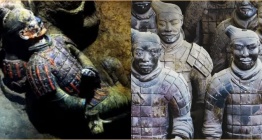


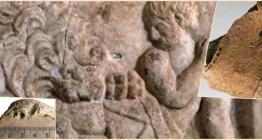
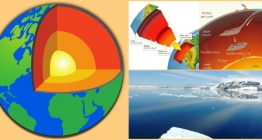

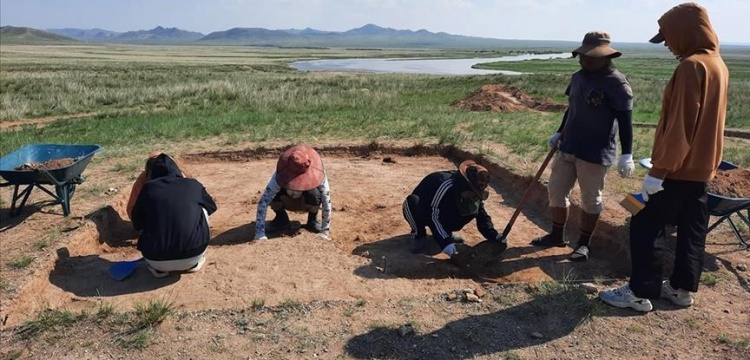
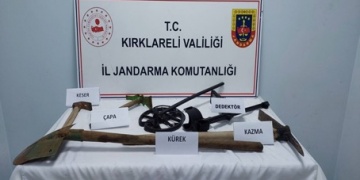 Kırklareli merkezli 3 ilde kaçak kazı operasyonunda 14 defineci yakalandı
Kırklareli merkezli 3 ilde kaçak kazı operasyonunda 14 defineci yakalandı  Antandros Antik Fest 16 Mayıs'ta arkeoloji, tarih ve kültür dostlarını bekliyor
Antandros Antik Fest 16 Mayıs'ta arkeoloji, tarih ve kültür dostlarını bekliyor 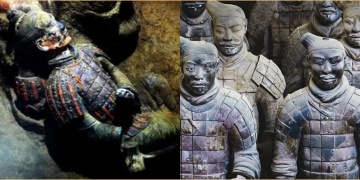 Terrakotta Ordusu'na orijinal boyaları korunmuş yeni savaşçı heykelleri katıldı
Terrakotta Ordusu'na orijinal boyaları korunmuş yeni savaşçı heykelleri katıldı 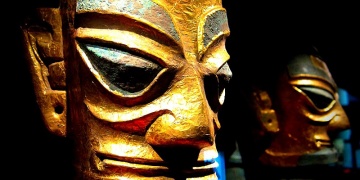 Çinli arkeologlar Shu uygarlığına ait altın maskeler ve bronz eserler buldular
Çinli arkeologlar Shu uygarlığına ait altın maskeler ve bronz eserler buldular 




